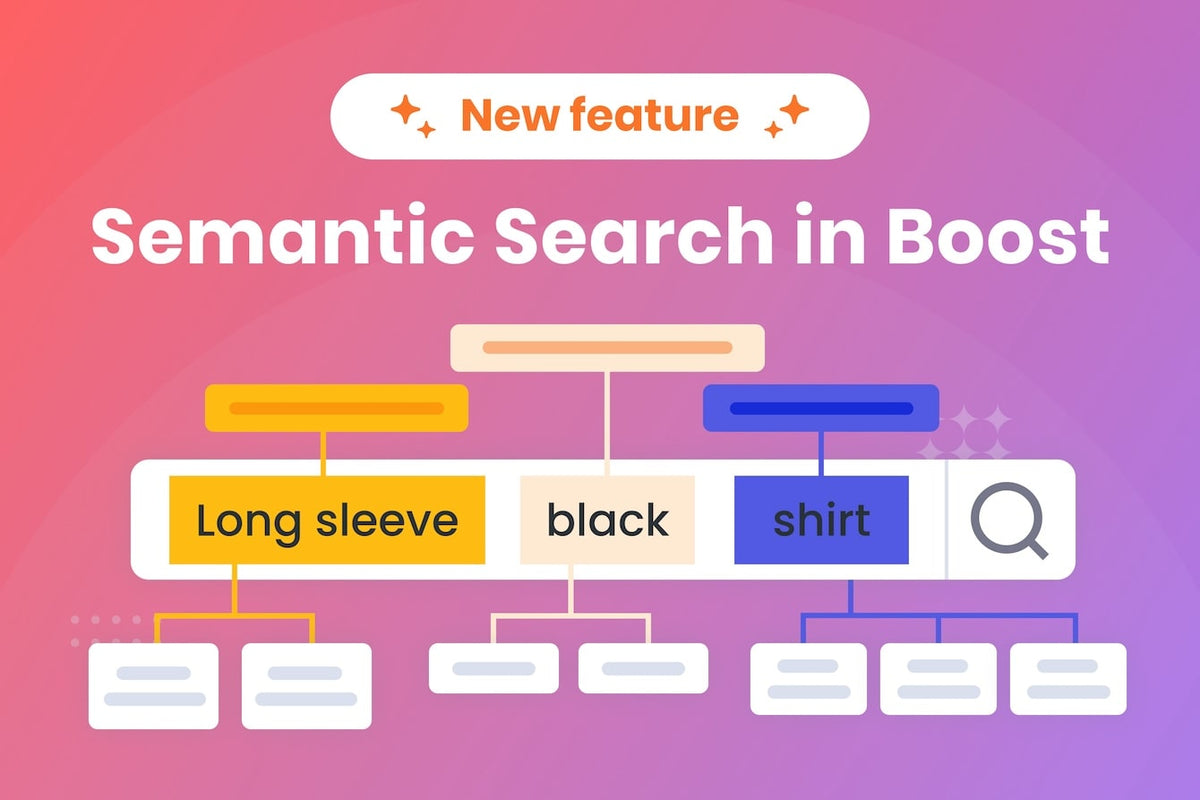It's no secret that finding the right products quickly and easily makes all the difference in the shopping experience. As an eCommerce store owner, ensuring your site features an optimized search function should be a top priority in the new year.
Today, 43% of customers go directly to the search bar when shopping online. With the rising eCommerce trends in marketing, technology, and customer expectations, search is more powerful than ever at connecting buyers to the items they want.
In this article, we'll walk through the crucial role of site search and share the top 7 eCommerce search best practices for 2024. These strategies can supercharge your online store and take conversions to new heights. Let's dig in!
About The Author

Vian Trinh always enjoys reading unless she is writing beautiful content for eCommerce lovers. As the Chief Growth Officer of FoxEcom, she and her team are dedicated to helping SMBs succeed by building smart and hyper-efficient solutions in the eCommerce world. When Vian’s not working, arts and jazz are her go-to for a delightful time.
The Significance of eCommerce Site Search
eCommerce site search refers to the functionality and technology used to enable users to search for products or services. It involves the implementation of a search bar or box on the website where users can enter keywords, phrases, or product names to find specific items they are interested in purchasing.
For business owners, site search serves as a crucial competitive differentiator when thoughtfully implemented. It smoothes the path to purchase by putting customers desired items at their fingertips within milliseconds.
Improved user experience: Since 80% of shoppers exit a brands site because of poor search, configuring an intuitive and enjoyable digital aisle is essential in fostering a positive connection with the brand.
Personalization and relevancy: Tailoring search results based on user behavior creates a personalized shopping experience, enhancing customer satisfaction. In fact, 50% of eCommerce sales can be traced back to customers who receive personalized search results.
Upselling and cross-selling: Strategic product suggestions during the search process open avenues for upselling complementary items and cross-selling related products, with 39% of shoppers being influenced by relevant search results.
Increased conversion rate: eCommerce site searchers are 2-3x more likely to convert to purchasers. It's because streamlined searches translate into quicker decision-making, nudging potential customers toward successful transactions.

Wanna dive deeper? Explore all you need to know about eCommerce site search here.
7 eCommerce Site Search Best Practices for 2024 and Ahead
1. Provide a prominent search box
The primary advantage of a prominently placed search box lies in its ability to facilitate quick product discovery. Customers, often armed with a specific product or category in mind, can expedite their search process, leading to a more efficient and satisfying shopping experience. A seamless search journey contributes directly to customer satisfaction, fostering a positive perception of your online store.
Strategic implementation is paramount to actualizing the benefits of a prominent search box. Position the search box prominently at the top of your website, ensuring it is easily accessible on all pages. Provide ample space around it, drawing attention without overwhelming the visual landscape. Opt for a simple magnifying glass icon, embodying the principle that simplicity enhances user experience. The idea is to make the search process intuitive and user-friendly.
One of the best eCommerce search examples is from UntilGone. It displays the search bar clearly with the white color in the dark background and separates them from other elements, which helps shoppers quickly access and search.

Image source: UntilGone
2. Allow autocomplete and error correction
The incorporation of autocomplete and error correction is a strategic move aimed at elevating customer satisfaction. By providing real-time suggestions as users type their queries, you reduce the friction in the search process, making it more intuitive and enjoyable. Simultaneously, error correction ensures that even if users make typos or input inaccuracies, the system intelligently corrects and directs them to relevant results. These features collectively enhance the overall accuracy of your site search, delivering precisely what users are looking for.
Among the best eCommerce search examples, Urban Outfitters’ search tool stands out by offering relevant keywords and products, even when the search terms aren’t fully typed.

Image source: Urban Outfitters
3. Optimize eCommerce search for mobile devices
Since 56% of all eCommerce transactions are completed on mobile devices, it’s undeniable that the explosion of mobile commerce is reshaping the digital shopping landscape. By optimizing your eCommerce search engine for mobile devices, you tap into a vast market and align your strategies with the evolving preferences of modern consumers.

To cater to the mobile commerce wave, it's crucial to leverage tools with built-in responsiveness. Your site search should seamlessly adapt to various screen sizes, ensuring that users on devices of all dimensions have an equally intuitive and efficient search experience. This adaptability is key to retaining and engaging mobile users.
An efficient solution in this regard is the Zest Shopify theme. Engineered with a focus on mobile optimization, Zest ensures that your eCommerce site not only looks great but functions flawlessly on mobile devices. Its responsive design, coupled with specifically tailored search functionalities, empowers your users to navigate, search, and shop effortlessly from the palm of their hand.
4. Utilize natural language processing
The adoption of Natural Language Processing brings forth a myriad of benefits. Firstly, it significantly boosts search accuracy by understanding the nuances of user queries. Instead of relying solely on keywords, NLP interprets the context and intent behind each search, delivering more precise results. This heightened accuracy directly contributes to increased relevancy, ensuring that users find what they're looking for with minimal effort.
Moreover, NLP has the power to add a personal touch to the search experience. By recognizing patterns in user behavior and preferences, it can tailor search results to individual tastes, creating a more personalized and engaging journey.
An example of applying NLP in eCommerce search engine is from Boll & Branch. It understands shoppers’ intentions and displays multiple products with related terms in its site search results for the keyword “cream quilt cover”.

Image source: Boll & Branch
5. Apply AI-enhanced site search
AI-enhanced site search is a gaming-changing technology that brings forth a cascade of benefits. Firstly, it streamlines the search process, leading to time and resource efficiency. Users can find what they're looking for faster, reducing bounce rates, and increasing overall satisfaction. The efficiency gains extend to your backend operations, optimizing resources and allowing your team to focus on strategic initiatives.
Beyond efficiency, AI-enhanced eCommerce site search introduces a new era of personalization. By analyzing user behavior, preferences, and purchase history, AI algorithms can tailor search results to individual tastes. Given that 48% of shoppers spend more if their experience is personalized, AI-enhanced site search not only enhances the user experience but also fosters revenue to a new height.

To implement AI-enhanced site search seamlessly, leverage third-party apps specializing in this advanced technology. One such exemplary solution is Boost AI Search, a tool designed to enhance the search functionality of eCommerce sites. Integrating Boost AI Search empowers your site with intelligent algorithms that understand user intent, delivering results that align with individual preferences.

Image source: Shopify App Store
6. Keep an eye on eCommerce search trends
Let’s look at these statistics:
Voice and visual search represent the next frontier in the evolution of eCommerce search engines. With the rise of voice-activated devices and the increasing importance of visual content, users are naturally gravitating towards more intuitive and interactive search methods. Voice search allows users to speak their queries, while visual search lets them find products using images rather than text. These trends align with the growing expectation for a more natural and personalized search experience.

Embracing eCommerce search trends such as voice and visual search is not just about keeping up, it's about meeting and exceeding user expectations. As users become accustomed to these convenient and efficient search methods, providing them becomes a hallmark of customer-centricity. Moreover, being an early adopter of such trends provides a distinct competitive advantage, positioning your eCommerce store as innovative and in tune with the latest industry developments.
One of the best eCommerce search examples here is Fashionova. The brand has incorporated visual search to help shoppers browse their various products more quickly and easily.

Image source: Fashionova
The key is to keep a finger on the pulse of technology news. Regularly update yourself on the latest advancements in search technologies. Be prepared to act swiftly, ensuring that your store is ready to implement these trends as soon as they become viable for widespread use.
7. Analyze eCommerce site search data
Businesses that use data analytics to inform their decision-making processes see a 126% increase in profit compared to those that don’t. By analyzing data to get the answers to these questions, you can make precise business decisions on enhancing your eCommerce site search and boosting store performance.
Unlocking the potential of eCommerce site search data yields a multitude of benefits. It allows you to gain invaluable insights into how users interact with your site, what they're searching for, and how successful their searches are. Armed with this information, you're empowered to make data-driven improvements that resonate with user expectations, ultimately enhancing the overall performance of your eCommerce platform.
To embark on this journey of data-driven optimization, leverage powerful tools like Google Search Console, Ahrefs, Semrush, and others. These tools offer comprehensive data analytics capabilities, providing detailed information about search queries, user engagement, and the performance of specific pages. Use this data to paint a vivid picture of user behavior, allowing you to make informed decisions.
When it comes to data analytics of eCommerce site search, these are the best questions recommended by Google:
- How frequently do users use my search box and what are they looking for?
- Where do people begin searches and what do they find?
- Are users satisfied with what they find?
- How do different groups of users search my site?
- What business outcomes result from users searching my site?

It’s Time to Optimize Your eCommerce Site Search for A Successful Year 2024
In the ever-evolving landscape of eCommerce, the time to optimize your site search for 2024 is now. These 7 eCommerce search best practices, from a prominent search box to harnessing AI, form the pillars of a seamless and personalized user experience.
By staying attuned to emerging trends and analyzing site search data, you not only meet current user expectations but also future-proof your online store.
So, as you embark on this optimization journey, here's to a year of enhanced user satisfaction, increased conversions, and continued success in the dynamic world of eCommerce.
Happy optimizing!




